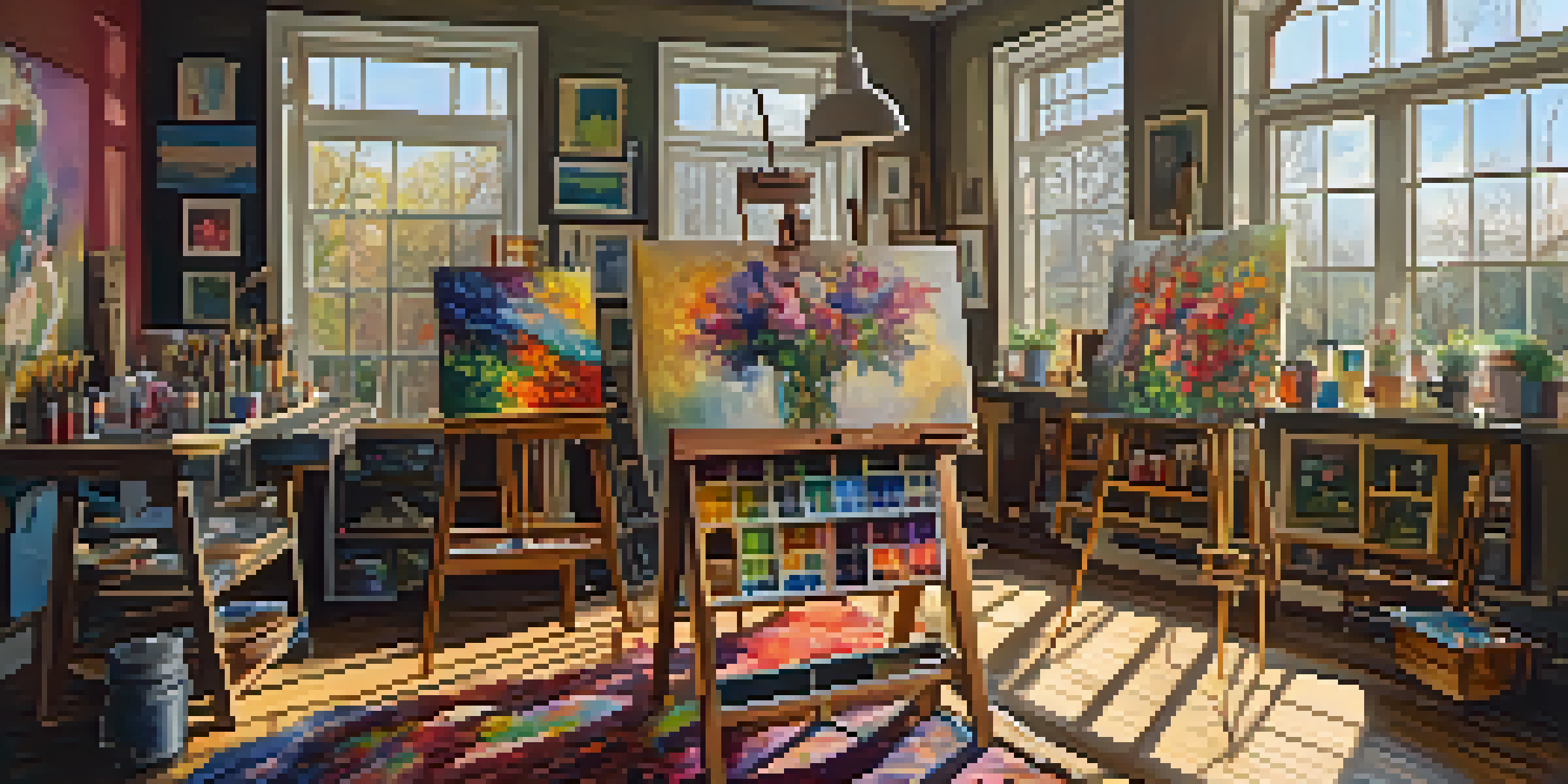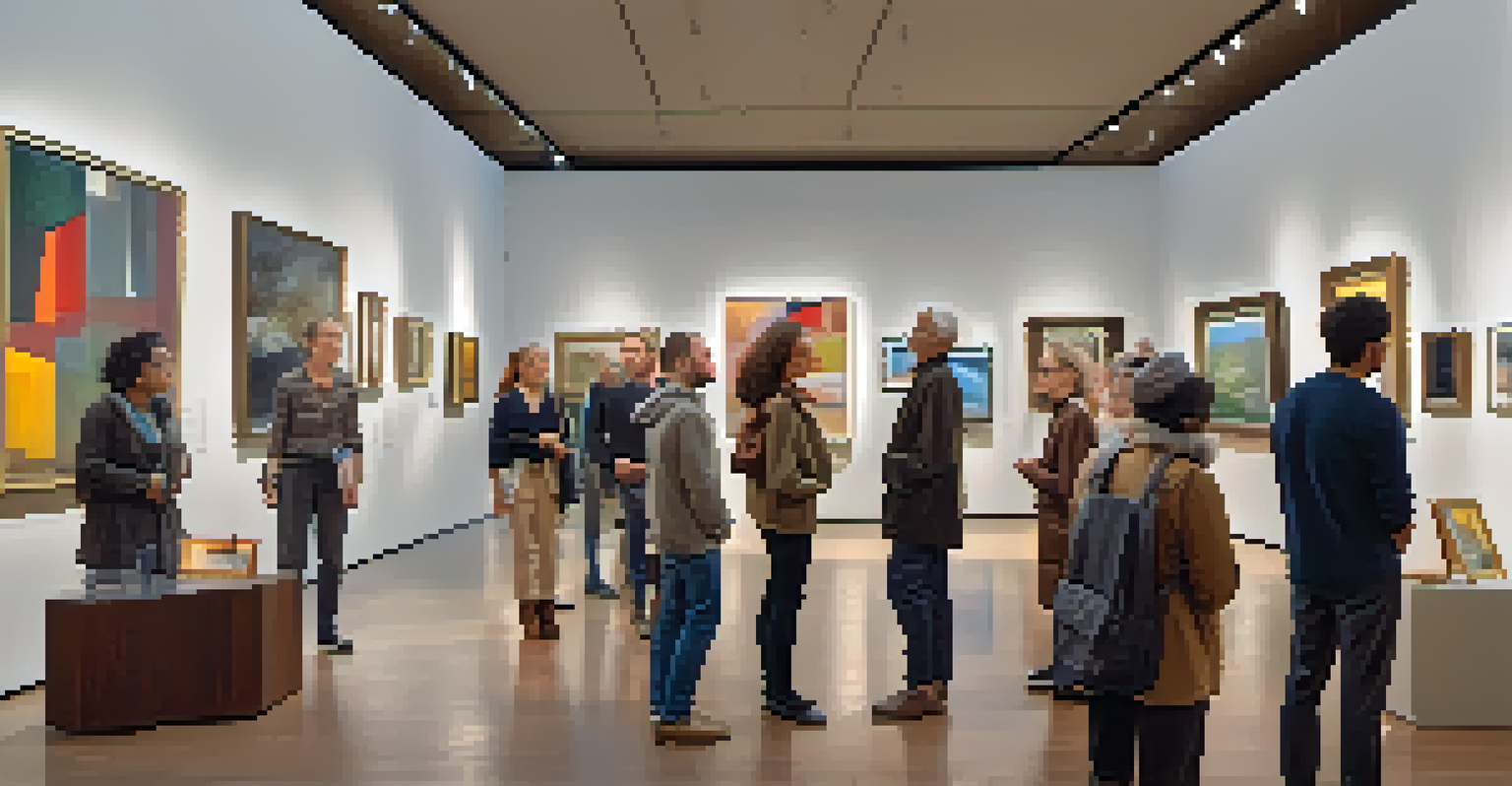The Future of Art Critique in an Influencer Culture

Understanding Art Critique in Today’s Digital Landscape
Art critique has long been a cornerstone of the artistic process, helping artists refine their work through feedback. In today’s digital landscape, this traditional practice is evolving rapidly due to the rise of social media and influencer culture. Now, anyone with a smartphone can share their opinions on art, which democratizes the critique process but also complicates it. What used to be confined to galleries and publications is now accessible to the masses online, leading to a diverse range of voices and perspectives.
Art is not freedom from discipline, but disciplined freedom.
However, this shift raises questions about the quality and depth of these critiques. With brevity being the norm on platforms like Instagram and TikTok, nuanced discussions may get lost in favor of quick reactions. While this can spark interest and engagement, it can also dilute the rich history and theory that underpin art critique. As we navigate this new landscape, it’s crucial to find a balance between accessibility and depth.
In essence, understanding how art critique has transformed in the digital age is crucial for both artists and audiences. This evolution opens up opportunities for new forms of engagement, but it also challenges traditional norms. As we explore these changes, we’ll uncover how this impacts both creators and viewers alike.
The Role of Influencers in Shaping Art Perception
Influencers have become key players in the art world, often acting as the bridge between artists and wider audiences. Their unique ability to curate and share content allows them to highlight emerging artists and trends, thereby shaping public perception of art. By leveraging their platforms, influencers can elevate lesser-known artists, giving them exposure that traditional galleries may not provide. This can lead to a more diverse art scene, as varied voices gain recognition.

However, the influence of these digital tastemakers comes with its own set of challenges. The opinions of influencers can significantly sway public taste, but they may prioritize trends over substance. This raises concerns about the authenticity of art appreciation in a world where popularity often trumps quality. As artists seek validation from these figures, they might feel pressured to conform to trends instead of pursuing their unique vision.
Art Critique is Evolving Online
The digital landscape has transformed art critique, making it more accessible but often sacrificing depth for brevity.
Ultimately, while influencers can foster greater access and visibility, their impact on art perception must be critically examined. It’s essential for audiences to discern between genuine appreciation and mere trend-following. As we reflect on this dynamic, it becomes clear that the role of influencers in art is both powerful and complex.
Challenges Facing Traditional Art Critiques
Traditional art critique, often rooted in academic discourse, faces various challenges in an influencer-dominated landscape. Critics who once held esteemed positions may struggle to maintain relevance as platforms prioritize viral content over thoughtful analysis. This shift can lead to a dilution of critical standards, where the loudest voices overshadow those with deep insights. As a result, the art community may become fragmented, with fewer spaces for in-depth critique.
The artist is not a special kind of person; rather, each person is a special kind of artist.
Moreover, the pressure to produce content quickly can compromise the quality of critiques. In an environment where attention spans are short, critics might opt for catchy soundbites instead of comprehensive evaluations. This trend risks sidelining complex discussions that are essential for understanding art’s deeper meanings. As the line between critique and commentary blurs, the integrity of traditional art criticism is at stake.
Navigating these challenges requires adapting to new formats while preserving the essence of critique. Critics must find innovative ways to engage audiences, perhaps through multimedia presentations or interactive platforms. By embracing change, the art critique community can continue to thrive and evolve in an influencer culture.
Emerging Voices in Art Critique: A New Generation
With the rise of social media, a new generation of art critics is emerging, often characterized by their diverse backgrounds and fresh perspectives. These voices challenge traditional notions of critique, blending personal experience with art analysis. They leverage platforms like YouTube and Instagram to share their insights, making art critique more accessible and relatable to younger audiences. This shift signifies an important evolution in how we engage with art.
These emerging critics often prioritize inclusivity and representation, focusing on marginalized artists and underrepresented narratives. Their approach encourages a broader understanding of art that goes beyond mainstream interpretations. This democratization of critique highlights the importance of varied perspectives, ensuring that different voices contribute to the conversation. As they carve out their space, these critics are reshaping the future of art discourse.
Influencers Shape Art Perception
Influencers play a critical role in promoting artists and trends, yet their focus on popularity can overshadow genuine artistic appreciation.
In essence, the emergence of new voices signifies a promising shift in the art critique landscape. By embracing diversity and innovation, this generation is challenging established norms and redefining how we engage with art. Their contributions are vital for a more holistic and inclusive understanding of artistic expression.
The Impact of Instant Feedback on Artists
In an influencer culture, artists now receive instant feedback from audiences, a stark contrast to the traditional critique model. This immediacy can provide valuable insights, allowing artists to gauge public reaction and adjust their work accordingly. However, it also creates pressure to please the masses rather than staying true to their artistic vision. This ongoing push and pull can lead to internal conflict for many creators.
Moreover, the nature of online feedback can be both constructive and destructive. While positive comments can motivate artists, negative or harsh critiques can be discouraging, especially when delivered anonymously. This environment can foster a sense of insecurity, as artists may constantly seek validation from their followers. Balancing this feedback with personal artistic goals is crucial for maintaining both creativity and mental well-being.
Ultimately, the impact of instant feedback on artists requires careful navigation. While it offers opportunities for growth and connection, artists must remain grounded in their unique voice. By understanding the dynamics of online critique, creators can harness feedback effectively without compromising their artistic integrity.
The Future of Art Critique: Blending Tradition and Innovation
As we look to the future, the landscape of art critique will likely continue evolving, blending traditional methods with innovative approaches. This fusion presents an exciting opportunity for critics to explore new formats, such as live-streamed critiques or podcast discussions. By engaging audiences in diverse ways, critics can create rich dialogues around art that resonate with contemporary viewers. This adaptability is vital for the survival of art critique in a digital age.
Furthermore, as the art world becomes more interconnected, cross-disciplinary collaborations are on the rise. Artists, critics, and influencers can work together to create immersive experiences that challenge the boundaries of traditional critique. These collaborations can lead to fresh insights and foster a deeper understanding of art’s role in society. By embracing this collaborative spirit, the future of art critique can thrive.
New Voices Redefine Art Critique
A new generation of diverse critics is emerging, emphasizing inclusivity and challenging traditional art discourse.
In conclusion, the future of art critique lies in its ability to adapt and grow alongside cultural shifts. By embracing both tradition and innovation, the art community can ensure that critique remains relevant and impactful. This evolution promises to enrich our appreciation of art and enhance the conversations surrounding it.
Cultivating Critical Thinking Amidst Influencer Culture
In a world saturated with opinions, cultivating critical thinking is more important than ever. As consumers of art and critique, it’s essential to approach content with a discerning eye. This means questioning the motivations behind influencers' recommendations and seeking out diverse perspectives. Encouraging audiences to think critically about what they consume can lead to a more informed and engaged community.
Artists and critics alike have a role to play in fostering this critical mindset. By encouraging open discussions and debates, they can create spaces where diverse viewpoints are welcomed. Workshops, panel discussions, and online forums can serve as platforms for dialogue, allowing audiences to explore art more deeply. This engagement not only enriches the community but also empowers individuals to form their own opinions.

Ultimately, nurturing critical thinking amidst influencer culture is a collective responsibility. By promoting thoughtful engagement with art, we can create a culture that values depth over superficiality. This shift can lead to a more vibrant and dynamic art world where both creators and audiences thrive.